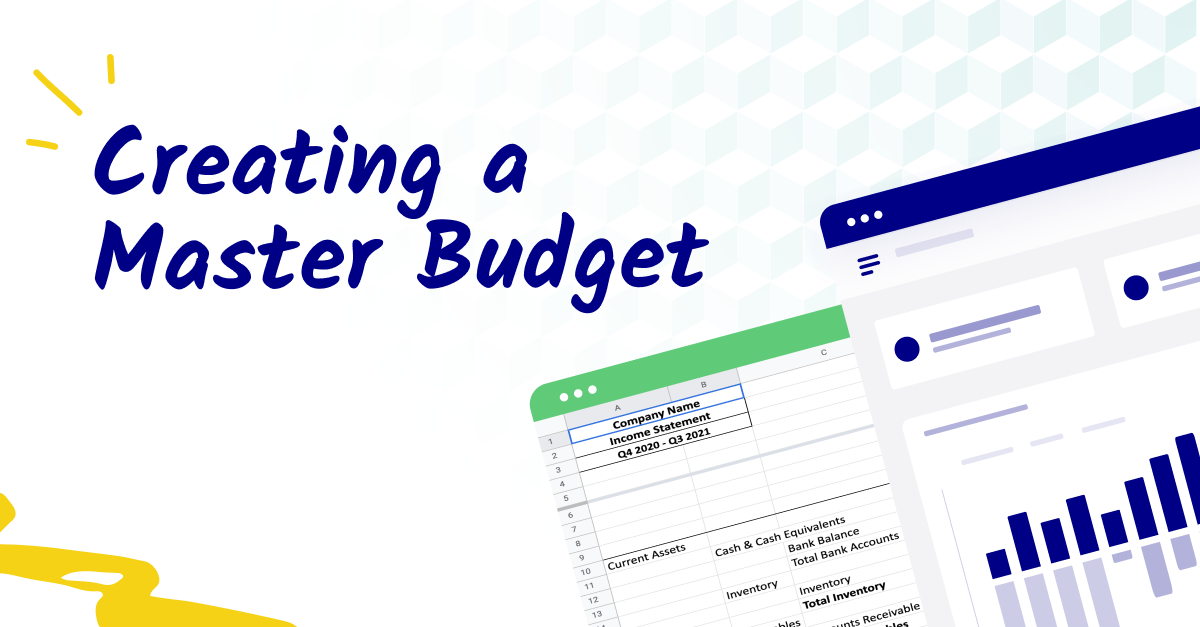Quick overview of budgeting fundamentals
Before diving into advanced strategies, let's quickly cover the basics. A solid business budget includes key components like revenue projections, expense forecasts, and cash flow analysis.
Revenue projections estimate the business income you expect to generate, while expense forecasts predict the costs your business will incur. Cash flow analysis ensures you have enough liquidity to meet your obligations.
Having a structured budgeting process helps ensure that all financial aspects are considered, making it easier to plan for the future.
There are a few ways to approach budgeting. Static budgeting, for example, sets a fixed budget at the start of the year and sticks to it. Modern approaches, however, involve dynamic techniques like rolling forecasts, which regularly update predictions based on new data, and zero-based budgeting, which starts from scratch each period, requiring justification for every expense.
Understanding these fundamentals sets the stage for more advanced budgeting techniques that can help future-proof your business.

Advanced budgeting techniques for experienced FP&A leaders
Now that we've covered the basics, let's explore some advanced budgeting techniques that can elevate your financial planning. These strategies go beyond static budgets and provide more flexibility and accuracy.
Without these techniques, your budget may not adapt well to changes in the market or business environment, potentially leading to financial inefficiencies such as missed cost-saving opportunities or inaccurate forecasting. This is because static budgets can become outdated quickly, failing to reflect the latest financial data and market trends.
Let's take a closer look:
- Rolling forecasts allow you to continuously update your budget based on the latest data, making it easier to adapt to changes and stay on track with your financial goals. This approach ensures that your budget remains relevant throughout the year.
- Zero-based budgeting requires you to justify all expenses for each new period, starting from zero. This can help identify and eliminate unnecessary costs to promote more efficient use of resources.
- Activity-based budgeting focuses on the costs of activities necessary to produce goods or services. This helps you allocate resources more effectively and improve overall efficiency.
Historical data and trend analysis are crucial for accurate forecasting. Examining past performance and identifying trends leads to more informed predictions about future financial outcomes, making your budgeting process much more precise.
With these techniques, you can create a more dynamic, flexible, and responsive financial plan that better supports your organization's strategic objectives. Implementing these methods can help you manage financial performance more effectively and ensure that your budgeting process is aligned with your business goals.
Essential business budgeting template list
Having the right templates can streamline your budgeting process and ensure consistency and accuracy. These free business budget templates are designed to simplify complex budgeting tasks and provide a structured approach to financial planning:
Annual budget template
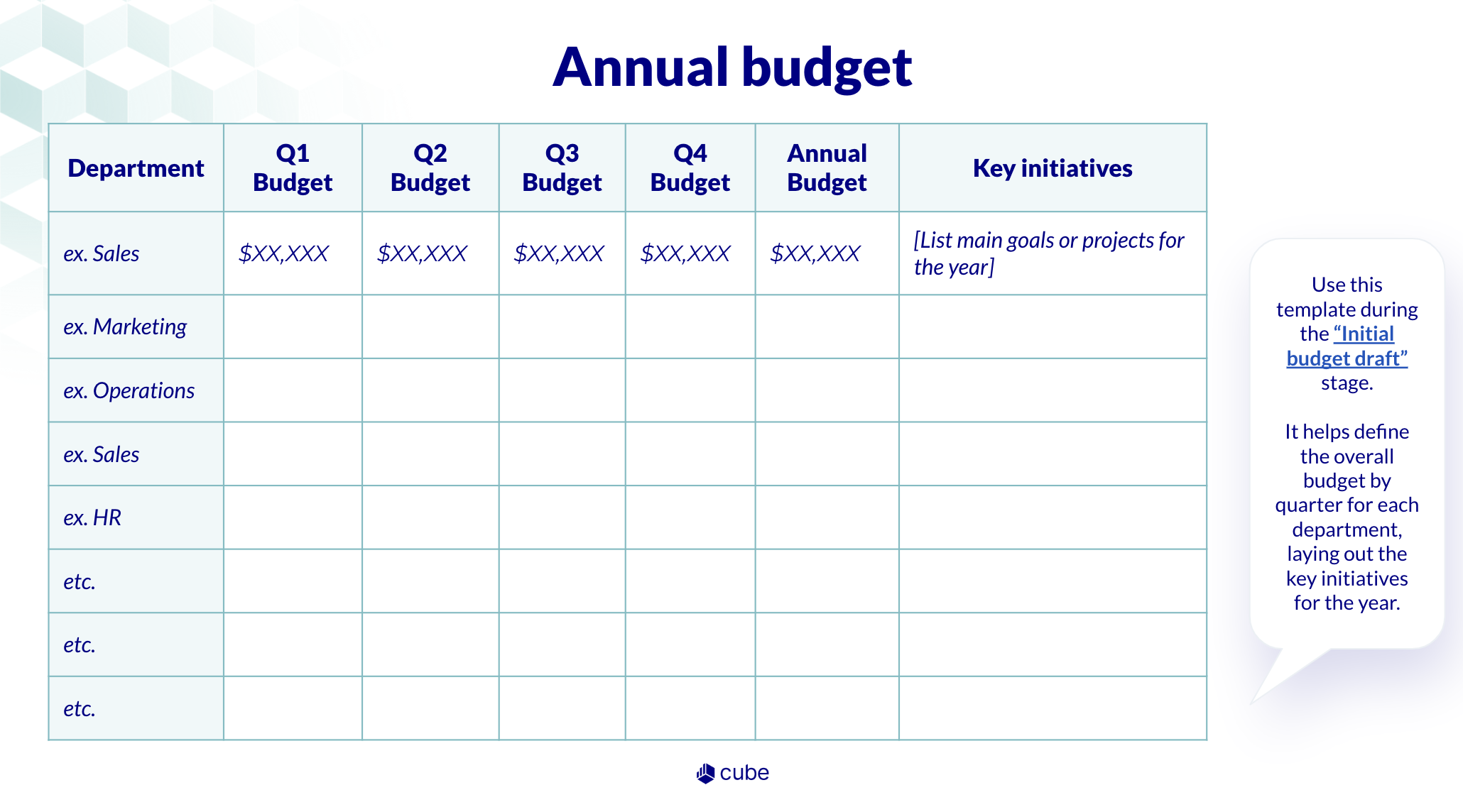
This all-in-one financial planning template helps you plan your financial activities for the entire year. It includes sections for revenue, expenses, and cash flow, allowing you to create a comprehensive overview of your financial plan.
Why it's essential: An annual business budget template is crucial for setting financial expectations and aligning your business goals with financial resources. It serves as the foundation for your financial planning and decision-making process.
When to use it: Develop your annual business budget at the beginning of the fiscal year to set the financial direction for the year ahead.
Rolling forecast template
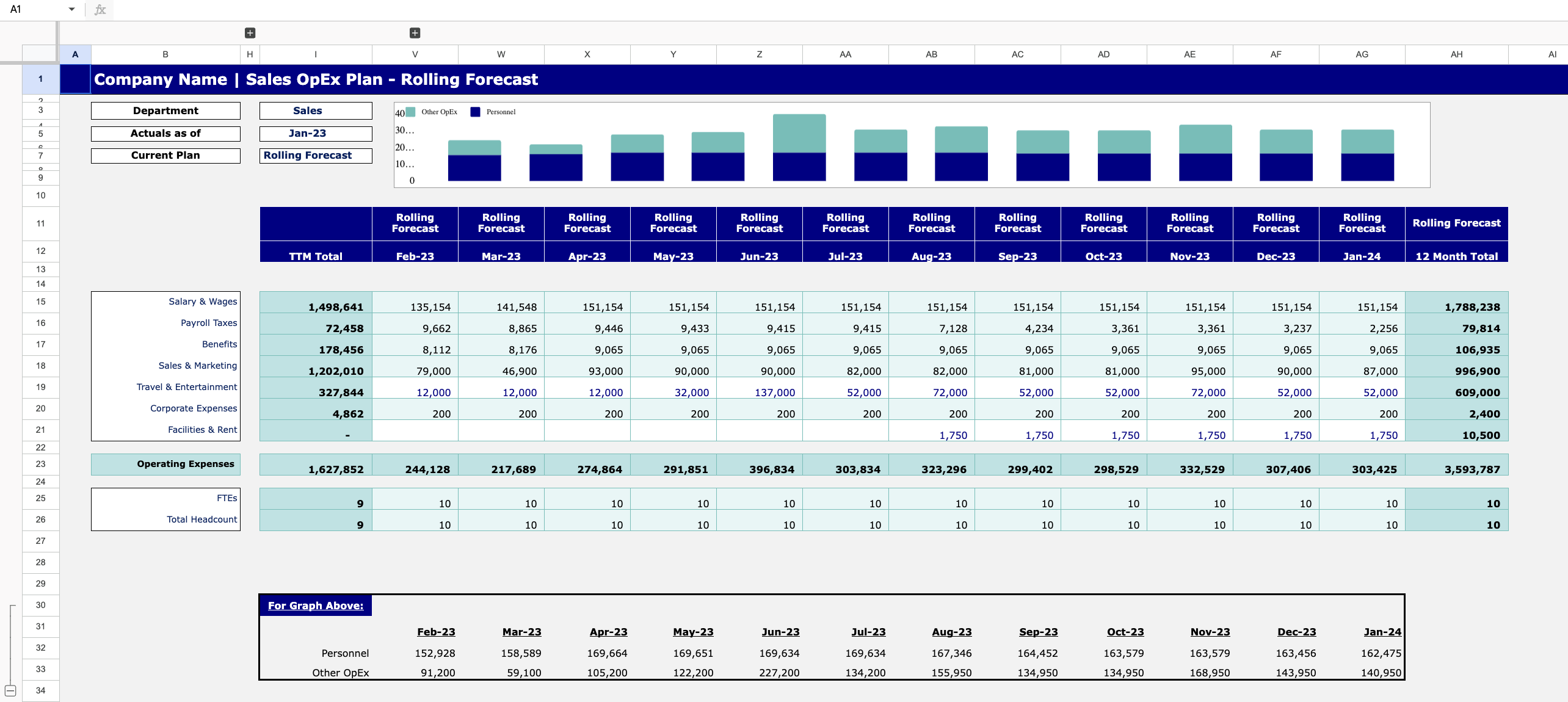
A rolling forecast template enables you to continuously update your budget based on the latest financial data. This template helps you adjust your financial plans throughout the year, ensuring your budget remains relevant and accurate.
Why it's essential: A rolling forecast allows you to adapt to changes quickly, providing more flexibility and responsiveness. It helps in anticipating future financial needs and adjusting strategies accordingly.
When to use it: Update this template quarterly or monthly to keep your budget aligned with current financial trends and data.
Capital expenditure (CapEx) budget template
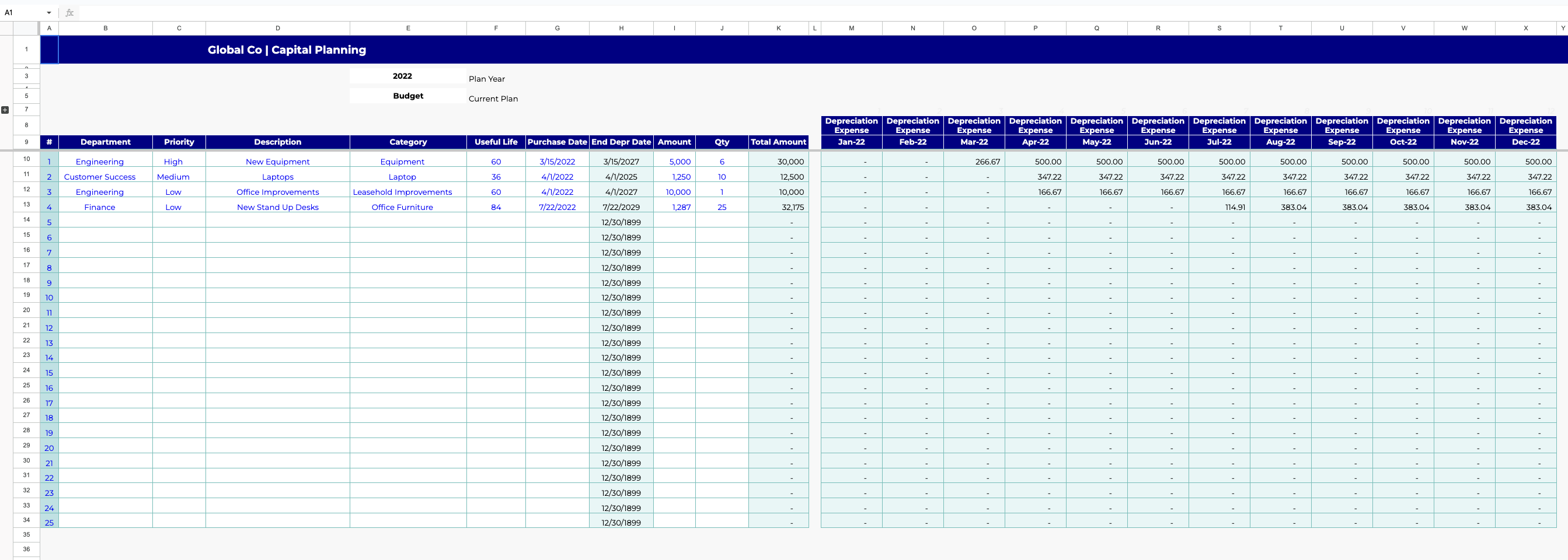
This CapEx budgeting template focuses on planning and tracking your capital expenditures. It includes sections for project descriptions, costs, timelines, and funding sources, helping you manage your investment in long-term assets effectively.
Why it's essential: Proper management of capital expenditures is crucial for long-term growth and asset management. This template ensures that capital investments are planned and monitored carefully to avoid overspending and underfunding.
When to use it: Use this template during your annual budgeting process and review it whenever planning major capital projects or investments.
Operating expense (OpEx) budget template
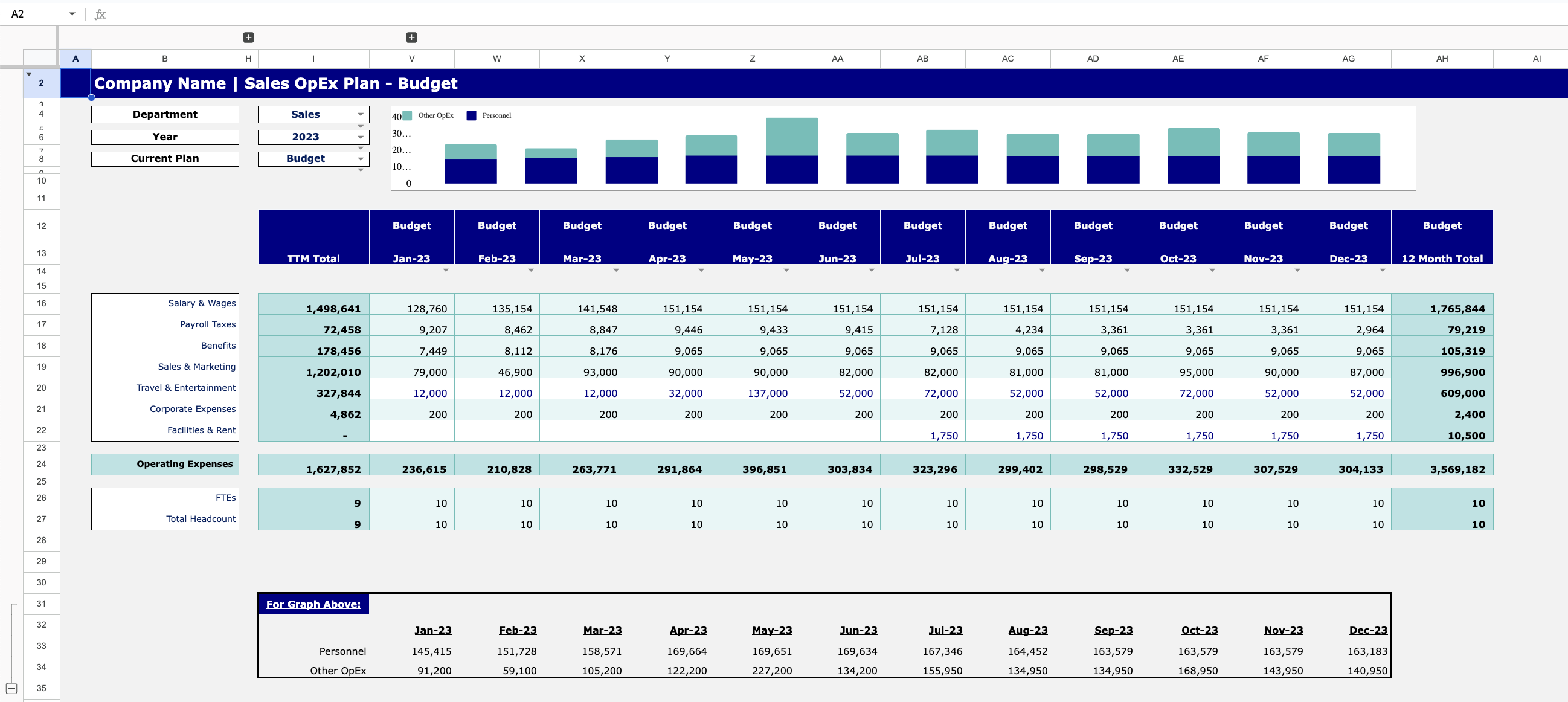
The OpEx budget template is designed to manage your day-to-day operational costs. It includes categories for different types of expenses, including a variety of fixed costs (e.g., employee salaries) and variable costs (e.g., direct labor costs), ensuring you have a clear view of your ongoing operational costs.
Why it's essential: Managing operating expenses effectively is vital for profitability and operational efficiency. This template helps in keeping track of routine expenses and identifying areas where cost-saving measures can be implemented.
When to use it: Develop your OpEx budget at the beginning of the fiscal year and review it monthly to monitor and control operational costs.
P&L budget vs. actuals template
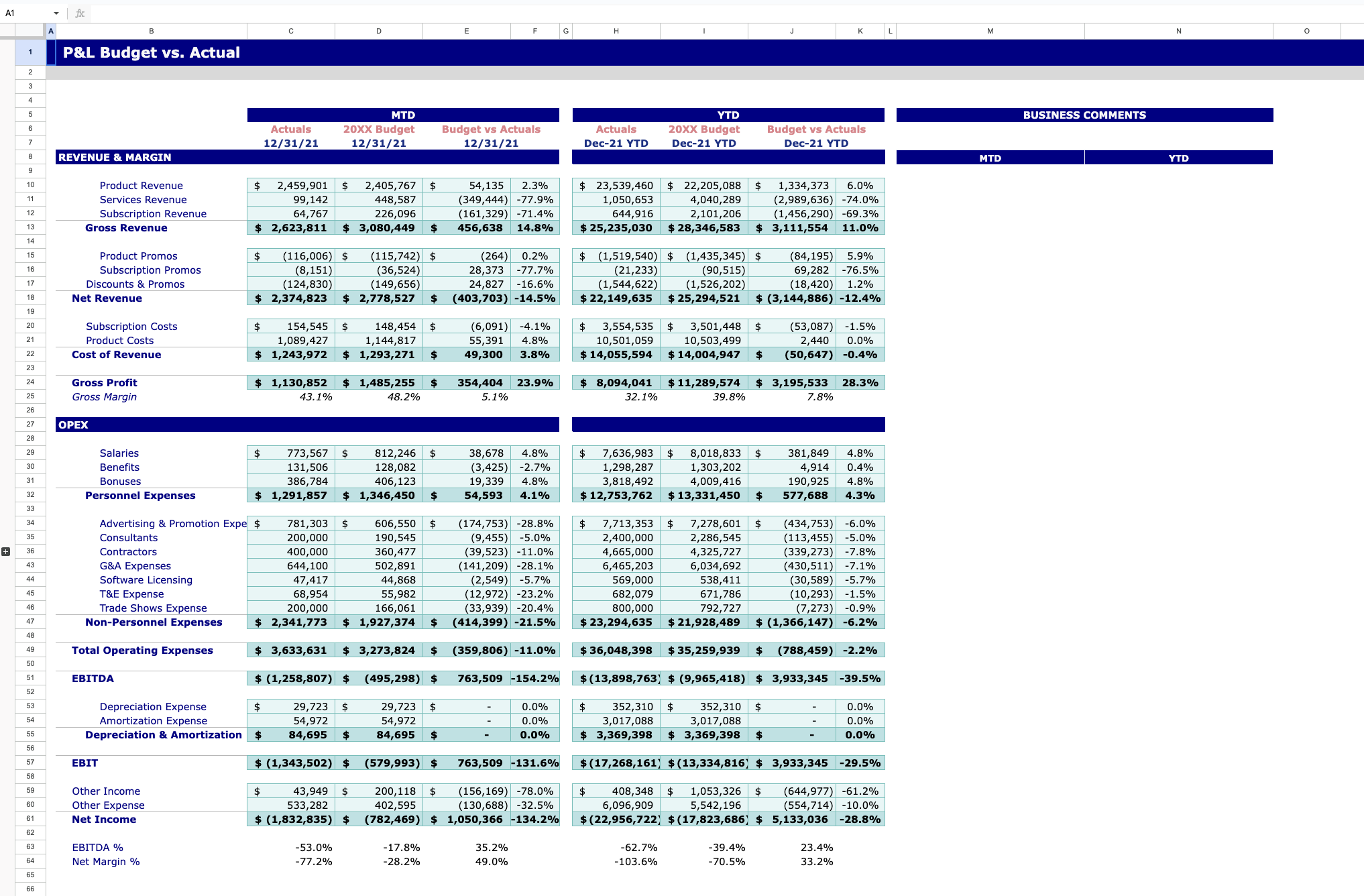
This P&L budget vs. actuals template allows you to compare your projected income and expenses against the actual results. It's an essential tool for monitoring your financial performance and making necessary adjustments.
Why it's essential: Regularly comparing budgeted figures with actual expenses and income helps in identifying variances and understanding the reasons behind them. This enables proactive financial management and timely corrective actions.
When to use it: Use this template monthly or quarterly to track your financial performance and ensure alignment with your budgeted goals.
Using these templates can significantly improve your budgeting efficiency and accuracy. They provide a clear framework for capturing all necessary financial information, making it easier to analyze and adjust your budget as needed.
Tools for future-proofing your budget
To maintain a competitive edge, it's important to implement modern tools that enhance your budgeting process. These tools help ensure your budget remains flexible, accurate, and aligned with your strategic objectives.
Let's take a look at the types of tools you should be adding to your tech stack:
Cloud-based budgeting software
Cloud-based budgeting software, like Cube, offers powerful features for collaborative budgeting and forecasting. These platforms allow multiple users to access and update the budget in real time, ensuring everyone is working with the most current data.

Cube, in particular, integrates seamlessly with other financial systems and provides real-time data and analytics, making it a comprehensive solution for modern FP&A needs.
What it does: Facilitates collaborative budgeting, real-time updates, and seamless integration with other systems.
Why it's important: Cloud-based software ensures your budgeting process is more efficient and accurate, leading to better decision-making. It also enhances data security and accessibility, allowing your team to work from anywhere.
Key features to look for:
- Real-time data and analytics: Provides up-to-date information on financial performance, allowing for timely decision-making and adjustments. This is crucial for maintaining an accurate and responsive budget that reflects current business conditions.
- Scenario planning and analysis tools: Enables you to model different financial scenarios and assess their potential impact on your budget. This helps in preparing for uncertainties and making informed strategic decisions.
- Integration with ERP systems: Automates data updates and ensures consistency across financial systems, reducing manual data entry and the risk of errors. This integration ensures your budget reflects the most current financial data.
- Collaborative budgeting and forecasting: Allows multiple users to work on the budget simultaneously, promoting teamwork and ensuring that all relevant perspectives are considered. This feature enhances accuracy and comprehensiveness in the budgeting process.
- Automated data updates and synchronization: Ensures that all data in the budgeting system is current and accurate, reducing the workload of manual updates and minimizing the risk of outdated information impacting financial decisions.
➡️ Want to learn more about cloud-based budgeting software? Click here to find out which platform is right for you.
Integration with ERP and financial systems
Integrating your budgeting tools with ERP (Enterprise Resource Planning) systems, such as NetSuite, streamlines data flow and improves accuracy. This integration reduces manual data entry and minimizes the risk of errors, ensuring that your budget reflects real-time financial data.
What it does: Connects your budgeting software with ERP and financial systems to automate data updates and ensure consistency.
Why it's important: Integration ensures that your budget is always based on the latest financial data, leading to more accurate forecasting and better decision-making. It also saves time and reduces discrepancies between different systems.
Key features to look for:
- Financial management: Provides comprehensive financial reporting and analysis capabilities, helping you maintain a clear view of your financial health and performance.
- Automation and workflow management: Automates routine tasks and workflows, improving efficiency and reducing the risk of human error.
- Scalability: Supports the growth of your business by accommodating increasing data volumes and more complex processes as your organization expands.
- Real-time data integration: Ensures that financial data is updated in real time, providing an accurate and current view of your financial status.
- Customization and flexibility: Allows you to tailor the system to your specific business needs, ensuring that it can adapt to changing requirements.
Tools like Cube's cloud-based platform give you confidence in your budget, ensuring it remains accurate and aligned with your strategic goals. Integrating with ERP systems like NetSuite further enhances data accuracy and efficiency, allowing you to navigate financial challenges and opportunities more effectively.
By incorporating these tools into your budgeting process, you can create a more dynamic, flexible, and responsive financial plan.
Top techniques for building flexibility into your budget
To future-proof your business budget, it's essential to build in flexibility. A flexible budget allows you to adapt to changes, manage risks, and seize opportunities more effectively. Here are some strategies to incorporate flexibility into your budgeting process.
Scenario planning and analysis
Scenario planning involves modeling different financial scenarios and assessing their potential impact on your budget. By considering best-case, worst-case, and most likely scenarios, you can anticipate potential risks and opportunities, making informed decisions and developing contingency plans to ensure your budget can withstand unexpected changes and challenges.
Sensitivity analysis
Sensitivity analysis examines how changes in key assumptions, such as revenue growth rates or cost increases, impact your budget. This technique identifies the key drivers of your financial performance and shows how variations in these drivers can affect your budget. Focusing on the most critical factors allows you to develop strategies to mitigate risks associated with those variables.
Contingency planning
Contingency planning involves setting aside resources to address unexpected events or emergencies. This can include creating a reserve fund or identifying areas where you can quickly reduce expenses if needed. Contingency planning provides a safety net for your budget, ensuring that you have resources available to handle unforeseen circumstances, helping maintain financial stability and avoid disruptions to your operations.
Regular budget reviews and adjustments
Regularly reviewing and adjusting your budget based on actual performance and changing conditions is crucial for maintaining flexibility. This process involves comparing your budgeted figures to actual results and making necessary adjustments. Regular reviews keep your budget aligned with current business conditions, ensuring it remains relevant and accurate throughout the year, allowing you to identify variances early and take corrective actions.
Scenario planning, sensitivity analysis, contingency planning, and regular budget reviews help you adapt to changes, manage risks, and capitalize on opportunities, ensuring your budget remains robust and responsive.
A step-by-step guide to implementing and maintaining your budget
Creating a robust budget is just the first step; ensuring it runs smoothly throughout the year is just as crucial. Here are some practical steps and tips to keep your budget on track and effective.
Steps to successfully implement your business budget
- Involve key stakeholders: Bring everyone to the table—from department heads to team leads. This way, the budget reflects diverse input and aligns with the company's goals. For instance, if a retail company wanted to streamline costs, they could gather insights from their sales, marketing, and operations teams to ensure no stone was left unturned.
- Communicate clearly: Once your budget is set, make sure the whole team is on the same page. Clear communication helps everyone understand their roles and responsibilities. A finance director at a tech startup, for example, may use regular team meetings and detailed emails to explain budget allocations, avoiding confusion and creating a sense of ownership.
- Set measurable goals: Define clear objectives that align with your budget. These goals will help you track progress and measure success. A marketing agency, for example, could set specific targets for client acquisition costs and revenue per client, reviewing them monthly to stay on course.
- Establish a monitoring system: Set up a reliable system to track financial performance. Regular reviews and real-time dashboards can help you stay on top of key metrics. A manufacturing company may use monthly financial reviews and a customized dashboard to monitor production costs and sales performance.
Tips for maintaining budget integrity throughout the fiscal year
- Continuous monitoring and reporting: Regularly check how your actual performance stacks up against your budget. Address any discrepancies quickly. A logistics firm, for instance, could use weekly reports to catch and correct overspending early, preventing bigger issues down the line.
- Adapt to changes: Be ready to tweak your budget as needed. Flexibility is key when unexpected changes arise. A SaaS company may pivot quickly during a market shift by reallocating funds from less critical areas to ramp up its digital marketing efforts, keeping growth on track.
- Use performance metrics: Keep an eye on key performance indicators (KPIs) to see how well you're meeting your financial goals. This helps you pinpoint areas needing improvement. For example, a healthcare provider may track patient acquisition costs and adjust their marketing strategies based on these insights.
- Encourage accountability: Make sure everyone knows they are responsible for their part of the budget. Regular check-ins and performance reviews can help keep things on track. A nonprofit organization, for example, may hold monthly review meetings to ensure all departments are sticking to their budgets and achieving their targets.
These steps and tips ensure your budget is not only implemented effectively but also maintained throughout the fiscal year. Engaging stakeholders, setting clear goals, and continuously monitoring performance will help you manage your business's finances better and keep your budgeting process aligned with your business objectives.
Conclusion: build better budgets
Creating a flexible and effective business budget is essential for staying agile and meeting your financial goals. By using advanced techniques, essential templates, and modern tools like Cube, you can build a budget that adapts to changes and supports strategic objectives.
Ready to see how Cube can transform your budgeting process? Request a demo today to future-proof your financial planning.



.png)









.png)

.png)







.png)
.webp)
